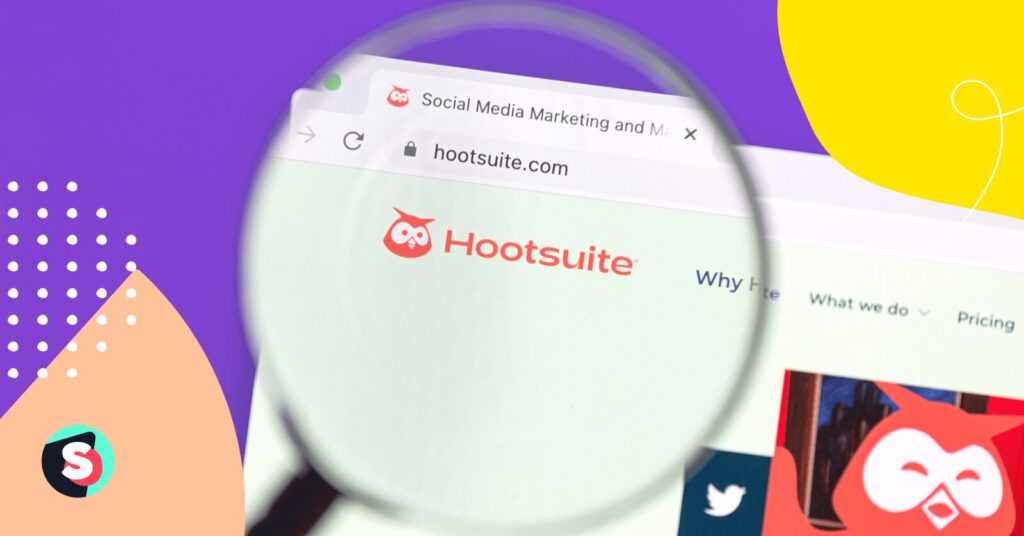In the fast-paced world of business – where information overload is the norm – there is power in simplicity and succinctness. Whether you’re a small business owner or the CEO of a global corporation, the ability to distill complex ideas into succinct, impactful messages sets you apart.
At the heart of this skillset lies an often underestimated but powerful tool: the executive summary. What may seem like a mere formality is actually a strategic art form; one that can open doors, secure investments, and propel your business into new levels of success.
In this article, we break down everything you need to know about how to write an executive summary. We even provide an executive summary template and executive summary examples to help you master this practice to the fullest. With the help of this comprehensive guide, you will both elevate your communication prowess and leave a lasting impression on stakeholders.
What is an executive summary?
An executive summary is an overview of the most important details of a longer document. In addition to outlining its most relevant details, the executive summary should engage readers and encourage them to read the full document.
When do you use an executive summary?
There are many instances in which it’s appropriate – and necessary – to use an executive summary. For instance, executive summaries are crucial when writing investment proposals. They provide potential investors with information on your business, mission, and projected budgetary requirements – all of which play an integral role in investment decisions.
Executive summaries are also essential when you’re targeting stakeholders who are short on time. Let’s say you’re sending an investment proposal to venture capitalists; many of these investment experts see hundreds of proposals every month. With such a tight schedule, reading a one-to-two-page summary is much more feasible than reading a 20-page document.
Why do you need to write one?
Writing an executive summary may not seem a make-or-break for the success of your plan. After all, stakeholders can extract the same information by simply reading the whole document, right? Not quite.
Here are a few key reasons why executive summaries are crucial to include in long-form business documents:
- A first impression: When you start reading a book, nothing can draw you in as effectively as a strong opener. The first chapter, page, or even sentence of a book can influence your decision to continue reading. The same principle applies to an executive summary. It’s the first impression readers get of your full-length document. Oftentimes, this first impression is what decision-makers will use to determine if your plan is worthy of pursuit.
- It helps readers understand your business: Your executive summary provides an overview of your business’ core details, including its name, location, and mission. Gaining these insights at a glance is important for stakeholders as it allows them to quickly assess if your company aligns with their interests and values.
- It facilitates document navigation: Whether it’s 20 pages or 100 pages, it never hurts to have a roadmap for your full-length document – and that is where your executive summary comes in. This section of the document highlights the most salient details of your report, allowing readers to easily identify and navigate to these topics.
What should be included in an executive summary?
Now that you have a baseline understanding of what an executive summary is and when to use one, let’s take a look at the necessary inclusions.
A strong executive summary should feature:
- The name, location, and mission statement of your business.
- Background and market research, particularly focusing on the existing problems in your industry.
- A description of your product or service, how it addresses the gaps in the market, and how it differs from existing brands in the market (i.e. your company’s competitive advantage).
- Financial information, including budgetary projections and investment requirements.
- Additional recommendations for the execution of the plan.
- Conclusion.
How do you write an executive summary?
Writing an effective executive summary doesn’t have to be complex; in fact, it can be made simple with the help of an executive summary checklist like the one below, allowing you to tick things off as you complete them.
- Updating the executive summary with every version of the long-form document, including any new and relevant information as needed.
- Ensure that the sections of the executive summary are organized in the same order as the body copy to facilitate document navigation.
- Use active voice and concise language. Avoid jargon, qualifying words (e.g. really or very), and acronyms that wouldn’t be easily understood by readers.
- Use bullet points, tables, and lists as needed to organize important information, findings, and/or recommendations.
- Remove unsupported statements or add factual data to back any points you intend to include in the final version of the document.
- Remove any cliches, repetitive statements, buzzwords, or unnecessary inclusions.
- Ensure your executive summary includes a conclusion, summarizing the desired outcomes or solutions proposed in the report.
- Verify that the executive summary can stand on its own (i.e. if it is the only part of the document a stakeholder reads, they will still be able to understand the objective of the project).
Tips for writing an effective executive summary
When learning how to write an executive summary, be sure to prioritize the following tips throughout the process. In doing so, you’ll create an executive summary that’s not only effective but captivating.
Be selective
It’s important to not overwhelm your reader with lengthy text and nitty-gritty details. With that in mind, make sure you’re only including the most relevant and salient information in your executive summary.
Focus on the major elements of your project (e.g. the problem you will be solving or the gap you will be filling, the proposed solution to said problem, and the concrete steps you will take to execute your plan).
Use strong and persuasive language
When writing your executive summary, make sure you are using engaging and impactful language; doing so will allow your recommendations to stand out and carry authority.
Start your document on the right foot with a captivating statement that encourages the audience to continue reading. Throughout the document, leverage active voice while also ensuring precision and persuasiveness.
However, keep in mind that using strong language in your executive summary is a fine line. Highlight your accomplishments without boasting. Emphasize your ambition without making lofty, unrealistic claims.
Proofread, proofread, proofread
Typos and grammatical mistakes can hugely compromise the credibility of your executive summary and your business in general. They can also create confusion or mislead your readers. To avoid this, make sure you have multiple proofreaders review the document before finalizing it.
Executive summary template for business plans
- Introduction
In this section, you set the stage. Explain to the reader what they are about to read, provide context, and outline the sections included in the document.
- Company
Provide a brief description of your company, including its name, location, goods and/or services, and your customer demographic.
- Opportunity and Objectives
Describe the opportunities (e.g. a consumer problem or gap in the market) available along with your objectives/solutions. Highlight the value to potential investors, customers, and other stakeholders.
- Market Analysis
Outline the key trends in your sector as well as your organization’s advantage in the market. List some of your key competitors and explain why you are confident that customers will choose your business over others.
- Operations
Give a high-level overview of your business’ operations, underscoring specific methods and best practices that will enable your company to achieve the objectives set out in the plan.
- Implementation
Provide a step-by-step breakdown of the measures your company will take to achieve these objectives/implement the previously mentioned solutions.
- Financial Summary
Outline relevant financial information here. For instance, if you aim to attract investors, list how much funding you have raised thus far and how much more you need. You may also need to include financial projections, such as anticipated revenue.
- Recommendations (Optional)
List any additional recommendations you may have to ensure the success of your project or plan. Ensure these recommendations are relevant to the reader.
- Conclusion
Summarize your project in a few sentences, reiterating the key points of the executive summary in an “elevator pitch” format.
Executive summary example
- Introduction
The SPF industry is evolving faster than ever before. Now, women aren’t just concerned with the number on the bottle – they’re seeking innovative products that marry sun safety and skincare, providing top-notch protection without compromising beauty. However, the industry is currently lacking in products that offer the perfect balance of responsibility and glamor.
- Company
Founded in 2015, SuperSun* is a San Francisco, California-based company revolutionizing sun protection. Our formulas exceed traditional sunblocks, offering advanced solutions that shield the skin from harmful UV rays while delivering nourishment and hydration that doesn’t disrupt our customers’ skincare regimens. With over a million customers in 40+ countries around the world, SuperSun is the go-to brand for those who want to love and protect the skin they’re in.
- Opportunity and Objectives
In recent focus groups and social media surveys, 75% of female customers have expressed a strong desire for an SPF product that can be layered over makeup without tarnishing its appearance. Nearly 70% of female customers also expressed difficulty finding such a product among competitors.
To address this consumer need and fill this gap in the market, our aim is to develop an SPF setting spray that can be layered over makeup while providing uncompromised UV protection.
To successfully formulate, package, and market this new product, we will require $250,000 in funding.
- Market Analysis
In the aforementioned recent focus groups, nearly 70% of female customers expressed difficulty finding an SPF product that can be seamlessly layered over makeup without ruining its appearance.
The lack of such a product was reflected in our competitor analysis. SuperSun’s two major competitors – SPF for Her and Girls Just Want to Have Sun – solely offer traditional cream-formula SPF products. A SuperSun SPF setting spray would be the first product of its kind on the market.
- Operations
SuperSun is particularly well situated to develop such a product due to our focus on innovative practices and cutting-edge formulas – two brand elements that 95% of our customers report feeling strongly satisfied with.
We also have a team of in-house dermatologists who help ensure that all products are Food & Drug Administration (FDA) compliant. This team will be at the forefront of the development of this new product.
- Implementation
Working with our in-house dermatologists as well as outsourced cosmetic chemists to develop a formula that is both safe and effective.Determine SPF level to ensure accurate packaging and marketing.Conduct stability testing to ensure the safety and efficacy of the product during long periods of wear.Submit the formula for FDA approval.Design packaging that clearly conveys the SPF level, usage instructions, and other relevant information. Coordinate manufacturing of the product.Plan and launch a marketing campaign to introduce and sell the product.
- Financial Summary
Thus far, SuperSun has accrued $600,000 in venture capital from a variety of investors. In the eight years since our launch, we have amassed over $5 million in revenues. Currently, our revenues are projected to grow by 15% over the next 12 months; however, with this product line expansion, we project that we can grow our revenues by 25%.
- Conclusion
In summary, a $250,000 investment would allow SuperSun to address a gap in the SPF product market by creating an SPF setting spray. This financial commitment would help boost SuperSun’s profits and therefore offer excellent ROI over the next 12 months and beyond.
Common mistakes to avoid when writing executive summaries
Now that we’ve reviewed the dos of writing executive summaries, let’s take a look at some of the don’ts.
Making unsubstantiated claims
Including inaccurate or unsubstantiated information in your executive summary is a surefire way to ruin your credibility – and this can, in turn, put your plan’s success at risk.
Ensure that you are able to back any statements you make in your executive summary with factual data (and include these details in the document).
Failing to center your audience
Whether you’re presenting to potential investors or other stakeholders, your audience wants to know what’s in it for them – make sure this is clear. When writing your executive summary, emphasize how the concepts therein relate to them rather than you or your company.
Your executive summary must be able to answer questions such as: What does this have to do with your audience? How does this initiative tie in with their story or personal mission? What will they get in return for their investment?
Not meeting the evaluation criteria
Certain executive summaries must meet specific evaluation criteria (particularly in the field of research). Failing to abide by these criteria can prevent decision-makers from assessing your full-length document and, consequently, your plan from succeeding.
Carefully assess any relevant evaluation criteria and cross-reference them with the final version of your document, making changes as needed.
Making it too lengthy
Writing an executive summary is all about balance; you need to include all the relevant information without making it so lengthy that it loses the attention of your reader.
However, knowing how to walk that line can be tricky. Fortunately, there’s a handy formula to help guide you.
Per LinkedIn, a good rule of thumb is that your executive summary should be roughly 10% of the total length of your document (i.e. one page per 10 pages).
Conclusion
Mastering the art of writing an effective executive summary is your key to opening doors and making waves in the world of business. By writing succinctly, focusing on pertinent ideas, and infusing your passion, you’ll not only summarize your project plan but entice your audience to contribute to your business’ success.
*Fictitious company name and information. Any similarity to a real organisation is purely coincidental.




